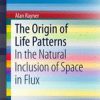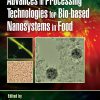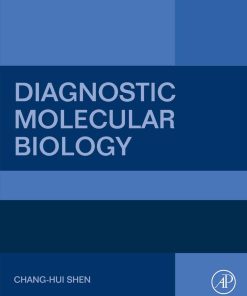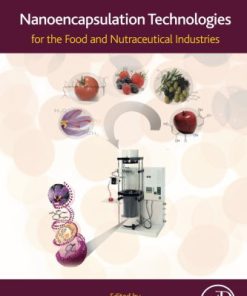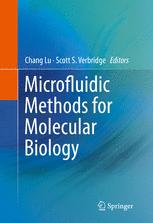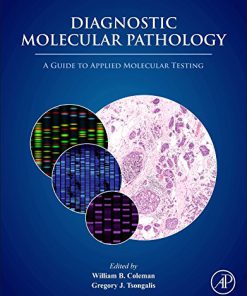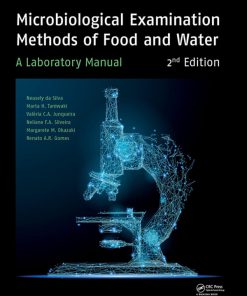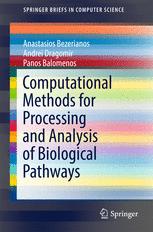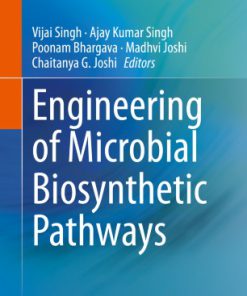Molecular microbial diagnostic methods pathways to implementation for the food and water industries 1st Edition by Nigel Cook,Martin D’Agostino,K Clive Thompson ISBN 0124169996 978-0124169999
$50.00 Original price was: $50.00.$25.00Current price is: $25.00.
Molecular microbial diagnostic methods pathways to implementation for the food and water industries 1st Edition by Nigel Cook, Martin D’Agostino, K. Clive Thompson – Ebook PDF Instant Download/Delivery: 0124169996, 978-0124169999
Full download Molecular microbial diagnostic methods pathways to implementation for the food and water industries 1st Edition after payment
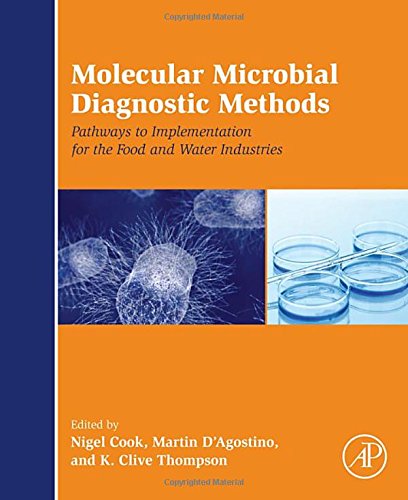
Product details:
ISBN 10: 0124169996
ISBN 13: 978-0124169999
Author: Nigel Cook, Martin D’Agostino, K. Clive Thompson
Molecular Microbial Diagnostic Methods: Pathways to Implementation for the Food and Water Industry was developed by recognized and experienced highlevel scientists. It’s a comprehensive and detailed reference that uncovers industry needs for the use of molecular methods by providing a brief history of water and food analysis for the pathogens of concern. It also describes the potential impact of current and cutting-edge molecular methods. This book discusses the advantages of the implementation of molecular methods, describes information on when and how to use specific methods, and presents why one should utilize them for pathogen detection in the routine laboratory. The content is also pertinent for anyone carrying out microbiological analysis at the research level, and for scientists developing methods, as it focuses on the requirements of end-users.
- Includes information on how to introduce and implement molecular methods for routine monitoring in food and water laboratories
- Discusses the importance of robust validation of molecular methods as alternatives to existing standard methods to help ensure the production of defendable results
- Highlights potential issues with respect to successful implementation of these methods
Table of contents:
- Chapter 1: Food industry current status
- Abstract
- Introduction
- Molecular methods currently used
- Laboratory automation in molecular methods
- Challenges
- Acceptance of use by the food industry
- Compliance with current legal requirements
- Disclaimer
- Chapter 2: Future directions for molecular microbial diagnostic methods for the food industry
- Abstract
- Introduction
- Evolution of food microbiology diagnostics: from petri dishes to PCR
- Why introduce an alternative molecular diagnostic method?
- Characteristics of an ideal food molecular method
- Past and current challenges
- Current challenges
- Concluding remarks
- Chapter 3: Current status of molecular microbiological techniques for the analysis of drinking water
- Abstract
- Introduction and overview
- The current state of play
- The influence of standard and reference methods
- Molecular techniques for testing potable water quality
- Application of molecular techniques to wastewater
- Conclusions
- Chapter 4: What is now required for water?
- Abstract
- Introduction and overview
- Indicator organisms
- Pathogens in drinking water
- Total heterotrophic bacteria
- Feasibility of the use of routine rapid water molecular methods
- Future predictions
- Conclusions
- Chapter 5: CEN/ISO standards for both culture and molecular methods
- Abstract
- Introduction
- Standards, standardization bodies, and structures in the microbiology of the food chain
- Standards developed in the microbiology of the food chain
- Status of novel technologies
- Conclusions
- Chapter 6: Laboratory validation, verification, and accreditation of molecular methods
- Abstract
- Alternative methods
- Foundations of an accredited laboratory
- Quality systems
- Cornerstones of accreditation
- Maintaining accreditation
- Customer education
- Health and safety
- Chapter 7: DNA extraction: finding the most suitable method
- Abstract
- Boiling method
- Column extraction
- Magnetic beads
- FTA™ cards
- RNA extraction methods
- Conclusions
- Chapter 8: Assessing organism viability and interpreting genomic unit versus colony forming unit data for water and food borne microorganisms, such as Legionella, Campylobacter, Salmonella, and Listeria
- Abstract
- Introduction
- Polymerase chain reaction
- Assessing microbial viability
- Overcoming the viability hurdle
- When to use viability discrimination
- Standardization and quality assurance
- Proficiency testing
- Conclusions
- Chapter 9: MALDI-TOF MS: a rapid microbiological confirmation technique for food and water analysis
- Abstract
- Introduction and overview
- Current confirmation methods and advantages of MALDI-TOF MS
- MALDI-TOF MS Listeria speciation validation
- Chapter 10: Chapter highlights, future requirements, and conclusions
- Chapter highlights
- Future requirements and conclusions
- Index
People also search for:
molecular microbial diagnostic methods
molecular diagnostics microbiology
molecular diagnostic methods
molecular methods definition
molecular microbiology diagnostic principles and practice
Tags: Nigel Cook, Martin D’Agostino, K Clive Thompson, Molecular microbial, diagnostic methods, pathways to implementation
You may also like…
Uncategorized
Biology and other natural sciences - Plants: Agriculture and Forestry
Innovation Strategies in the Food Industry Tools for Implementation 1st Edition Charis M. Galanakis
Biology and other natural sciences - Plants: Agriculture and Forestry
Science (General)
Diagnostic Molecular Pathology A Guide to Applied Molecular Testing 1st Edition William B. Coleman
Business & Economics - Industries
Science (General)
Microbiological examination methods of food and water: a laboratory manual Second Edition Silva
Biology and other natural sciences


